Gobos and Prisms: Creative Effects with Moving Heads
- Gobos and Prisms: Creative Effects with Moving Heads
- Why gobos and prisms matter for moving head dj lights
- Types of gobos used in moving head dj lights and how to choose them
- Prisms and beam multiplication: design and effect options with moving head dj lights
- Combining gobos, prisms, and other optics in moving head dj lights
- Practical rigging, safety, and power considerations for clubs and tours using moving head dj lights
- Programming techniques for compelling visuals with moving head dj lights
- Comparison: gobos vs prisms vs other effects in moving head dj lights
- Real-world use cases: clubs, concerts, and broadcast using moving head dj lights
- Cost, maintenance and lifecycle considerations for moving head dj lights with gobos and prisms
- LQE: company background and how we support creative effects in moving head dj lights
- Buying checklist: choosing the right moving head dj lights for gobos and prisms
- FAQ — Common questions about gobos, prisms, and moving head dj lights
- Contact and product viewing
Gobos and Prisms: Creative Effects with Moving Heads
Why gobos and prisms matter for moving head dj lights
Gobos and prisms are among the most powerful tools a lighting designer can use to transform a simple beam of light from a moving head dj lights fixture into dynamic textures, patterns, and motion. For DJs, clubs, touring acts and event producers, the right use of gobos and prisms turns lighting from background ambience into a central visual element that interacts with music, architecture, and performers.
In practical terms, gobos are templates placed inside the fixture's optical path that project shapes and patterns; prisms are optical elements that split and multiply beams to create geometric repetitions and kaleidoscopic effects. When combined with the pan/tilt, color, focus and zoom functions of modern moving heads, they expand the designer's toolbox dramatically.
Types of gobos used in moving head dj lights and how to choose them
Gobos come in several materials and styles, and choosing the right type depends on desired look, fixture compatibility, and durability:
- Metal gobos: Durable, ideal for crisp, high-contrast patterns in spot or profile moving heads. They are heat-resistant and suitable for long-term use in fixtures with high-temperature beams.
- Glass gobos: Allow for photorealistic images, complex textures, and color when paired with dichroic filters. They typically produce higher detail than metal gobos and are common in high-end moving head profile lights.
- Rotating gobos: Mechanically mounted to rotate independently or with the gobo wheel, adding motion within the projected pattern.
- Custom gobos: Logos, venue elements, or bespoke artwork etched into glass or formed in metal for brand-driven events.
When selecting gobos for moving head dj lights, check physical size (Gobo diameter or type, i.e., 30mm/36mm/50mm depending on fixture), compatibility with the gobo wheel, heat tolerance, and whether the fixture supports rotating or indexing gobos. For DJ-focused rigs where rapid changes and strong beam effects are required, a mix of metal and glass gobos often works best: metal for punchy beams, glass for texture and imagery.
Prisms and beam multiplication: design and effect options with moving head dj lights
Prisms, typically 2-, 3-, 4- or 6-facet optical elements, break a single beam into multiple, angled beams. This is especially effective in beam moving head lights and moving head hybrid fixtures that already offer tight beams and high output. Key prism uses include:
- Creating radial arrays for crowd washes and aerial effects.
- Splitting gobos into multiple repeated patterns, producing kaleidoscopic visuals.
- Enhancing movement: when combined with pan/tilt, prisms create sweeping motifs that multiply and fill stage volumes.
Prism selection depends on aperture size, the compatibility with fixture zoom range, and whether the prism can be indexed or removed in real time. Many modern moving head dj lights offer motorized prism wheels allowing speed control and rapid insertion/removal during a show.
Combining gobos, prisms, and other optics in moving head dj lights
The creative potential grows when gobos and prisms are combined with other optical and dynamic features of moving head dj lights: zoom, focus, iris, frost, and beam shapers. Examples:
- Gobo + frost: Soften a gobo edge to create a textured wash rather than a hard projection, useful for atmospheric club looks.
- Gobo + prism + zoom: Project a detailed gobo that multiplies into several smaller images and then zoom out to turn the pattern into a field of points across a venue.
- Rotating gobo + motorized prism: Produce swirling kaleidoscopic patterns perfect for buildups and breakdowns in music.
Programming note: when using multiple effects, prioritize fixture lumens and beam control. Dense prism multiplications can reduce the perceived brightness per beam, so pair these effects with high-output beam moving head lights or use them over shorter throw distances.
Practical rigging, safety, and power considerations for clubs and tours using moving head dj lights
Rigging moving head dj lights with gobos and prisms requires attention to mechanical and electrical details:
- Weight and balance: Some glass gobo modules and prism attachments add weight. Ensure truss points are rated for the total fixture weight plus accessories.
- Heat and ventilation: Metal gobos and closely packed fixtures can become hot. Allow adequate ventilation, and verify the fixture’s gobo housing cooling specs.
- Power and control: High-output moving heads can demand substantial current. Calculate inrush current for multiple fixtures on a circuit and use intelligent power distribution to avoid breaker trips. Use DMX or Art-Net via properly terminated runs; observe DMX addressing to avoid control conflicts.
Safety checklist: secure fixtures with safety cables, confirm accessories are correctly installed and locked, and follow the manufacturer’s instructions for swapping gobos or prisms while fixtures are powered down.
Programming techniques for compelling visuals with moving head dj lights
To make the most of gobos and prisms in a live setting, programming strategy matters as much as equipment:
- Build layers: Use different fixtures for foreground beams (tight, gobos + prisms) and background washes (wash heads with frost and wide gobos) to create depth.
- Musicality: Match gobo changes and prism motion to musical accents. For DJ performances, program strobe-synced gobo rotations or prism indexing for drops.
- Scenes and cues: Pre-program scenes for different sections of a set (intro, build, peak, breakdown) to ensure smooth transitions and reduce on-the-fly changes.
- Use macros and palettes: Modern consoles allow you to store favorites. Save gobos, prism positions, speeds, and color palettes as quick recalls.
For touring or club residencies, invest time into fixture profiles in your console so gobos and prisms behave consistently across different rigs and venues.
Comparison: gobos vs prisms vs other effects in moving head dj lights
Below is a concise comparison table highlighting purpose, visual result, and best fixture types for each effect. Sources for typical compatibility and use cases are listed after the article.
| Effect | Primary Purpose | Visual Result | Best in Fixture Type |
|---|---|---|---|
| Gobo (metal) | Sharp pattern projection | Crisp silhouettes, logos | Moving head profile, beam |
| Gobo (glass) | Detailed textures and images | Photorealistic imagery, fine textures | Moving head profile, hybrid |
| Prism | Beam multiplication | Radial arrays, kaleidoscopes | Beam moving head, hybrid |
| Frost/Haze | Soften beam/ambient fill | Washed textures, less contrast | Wash heads, profile |
Sources for this table: manufacturer product pages and manuals (e.g., Claypaky, Martin, Chauvet). See source list below.
Real-world use cases: clubs, concerts, and broadcast using moving head dj lights
- Nightclubs: Tight beam moving head lights with 3- or 6-facet prisms create energetic aerial fills above a dancefloor; rotating gobos projected onto backdrops add motion without overpowering sightlines.
- Touring concerts: Combine profile moving heads with glass gobos for high-detail stage branding and beam moving heads with prisms for large-scale audience effects during climaxes.
- Broadcast and studio: Use glass gobos in controlled environments for scenic projections; minimize haze and rely on carefully controlled illumination to avoid spill into cameras.
Case tip: In venues with low ceilings, prioritize narrow-beam fixtures and small-scale gobos to prevent pattern overlap and maintain clarity.
Cost, maintenance and lifecycle considerations for moving head dj lights with gobos and prisms
Investing in accessories (custom gobos, spare prisms) and maintenance extends fixture life and ensures consistent performance:
- Spare parts: Keep extra gobo wheels, glass gobos, and prism modules in case of damage.
- Cleaning: Dust and oil on glass gobos or prisms degrades image quality. Clean lenses and optic elements per manufacturer guidance.
- Lamp and LED maintenance: LED moving heads require less routine lamp replacement than discharge lamp fixtures, but keep firmware updated and monitor thermal performance.
Budgeting note: While glass gobos and advanced prism modules increase upfront cost, they elevate production value and can reduce the need for additional fixtures, often saving money in the long run.
LQE: company background and how we support creative effects in moving head dj lights
LQE was founded in 2008 and is headquartered in Foshan, China. We are a professional OEM/ODM stage lighting equipment manufacturer specializing in the R&D, production, and sales of middle- and high-end digital stage lighting. Our production base covers an area of about 10,000 square meters, has the ability to produce 100,000 lighting fixtures annually, and has 80 national patents.
Our range of stage lighting equipment is diverse, including various moving head lights and static lights, suitable for applications in theaters, music concert stages, studios, broadcasting, religious spaces, exhibitions, nightclubs, leisure venues, theme parks, and more.
We are committed to providing first-class modern stage lighting equipment and exceptional customer service, all while maintaining the best value and cost-effectiveness in the industry. Our goal is to deliver high-quality, long-lasting lighting solutions that help stage designers and producers realize their vision.
Our vision is to become the world's leading manufacturer of LED stage lighting.
LQE combines technical R&D capability with production scale to deliver moving head dj lights and accessories tailored for demanding environments. Key product categories and competitive strengths include:
- Waterproof stage lighting: IP-rated fixtures for outdoor events and theme parks, designed to resist moisture while maintaining optical performance.
- Beam moving head light: High-output beam fixtures ideal for prisms and gobo-driven aerial effects; strong lumen output and tight beam control.
- Moving head hybrid light: Versatile fixtures offering beam, wash and spot modes—perfect for combining gobos and prisms in one unit.
- Moving head wash light: Wide-field coverage with smooth color mixing for background layers.
- Moving head profile light: Precision optics and gobo compatibility for sharp projections and image work.
- LED effect light: Strobes, pixel-mapped arrays and dynamic effects designed for nightclub and entertainment programming.
- LED studio light: Flicker-free fixtures optimized for broadcast color accuracy and camera-friendly performance.
- LED par light: Cost-effective wash lighting for uplighting and color saturation.
- Lighting accessories: Gobo sets, prism modules, rigging hardware and power/data distribution units.
Core competitive advantages:
- Strong OEM/ODM capabilities to customize optics and gobo wheels for specific client requirements.
- Large-scale manufacturing that supports consistent quality and competitive pricing.
- Patent-backed innovations that reduce operational downtime and improve reliability in touring and rental fleets.
Buying checklist: choosing the right moving head dj lights for gobos and prisms
When evaluating fixtures, use this quick checklist:
- Compatibility: Does the fixture accept the gobo sizes and prism types you need?
- Brightness: Are the lumens and beam intensity sufficient for your throw distance and prism multiplication?
- Control: Does the console support fine control over gobo indexing, prism insertion, speed and rotation?
- Durability: Heat management, IP rating (if outdoors), and build quality.
- Serviceability: Availability of spare parts, local service partners, and firmware support.
These priorities help you match fixture choice to the demands of touring, club residency, or fixed-install applications.
FAQ — Common questions about gobos, prisms, and moving head dj lights
Q: Can I use any gobo in any moving head dj lights fixture?A: No. Gobos have specific sizes and mounting types. Check your fixture manual for gobo diameter and type (metal vs glass) before ordering.
Q: Do prisms reduce brightness?A: Prisms split the beam into multiple beams, so perceived brightness per beam decreases. Use high-output fixtures or shorter throw distances to compensate.
Q: Are custom gobos expensive?A: Costs vary by material and complexity. Metal gobos are generally less expensive than glass. Custom glass gobos cost more due to fabrication complexity.
Q: How often should gobos and prisms be cleaned?A: Clean optical elements on a scheduled basis depending on use and environment; dusty or smoky venues may require monthly cleaning, while cleaner studio environments might be quarterly.
Q: Can I change gobos during a show?A: Only if the fixture has multiple gobo wheels or a motorized gobo indexing system. Manual swaps must be done with fixtures powered down and cooled.
Contact and product viewing
If you want to see how gobos and prisms perform in real rigs, or if you need custom gobo design and fixture recommendations for moving head dj lights, contact our sales and technical team. We can provide demos, photometric data, and fixture samples tailored to your venue or tour needs. View our product range and request a quote to find the best lighting solution for your project.
Sources:
- Grand View Research: Stage Lighting Market reports (market trends and LED adoption estimates)
- Manufacturer product pages and manuals: Claypaky, Martin by HARMAN, Chauvet Professional (gobo/prism usage and compatibility)
- ANSI E1.11 DMX512-A standard documentation (control protocol guidance)
Top led moving head wash light Manufacturers and Suppliers
DMX512 Basics for Moving Head DJ Lights
How to Choose the led stage light manufacturer and supplier in us?
The rgb par can lights Cost Guide | LQE Ultimate Insights
Distributor
Can LQE help with product training and technical guidance?
Absolutely. We offer remote training sessions, user manuals, installation guides, and continuous technical support to help your team understand and sell our products with confidence.
What support does LQE offer to its distributors?
We provide our distributors with a full package of support, including:
Marketing materials and product catalogs
Technical training and manuals
Fast-response after-sales service
Exclusive regional pricing and policies (for qualified partners)
Priority access to new products and updates
Do you offer OEM/ODM support for distributors?
Yes, as a professional OEM/ODM manufacturer, we support brand customization, including logo printing, packaging design, and even custom features based on project needs.
What are the advantages of becoming an LQE distributor?
Access to high-performance, patented lighting products
Competitive factory pricing and excellent profit margin potential
Strong R&D capabilities with 80+ national patents
Reliable production capacity: 100,000 units annually
Dedicated account manager to support your growth
1000w
Does LQE Offer Customized Stage Moving Light Solution?
An experienced R&D team can provide customized digital stage lighting OEM/ODM solution service to meet clients’ unique demands from global markets, such as customized CRI parameter, Ingress protection rating, effect, etc.
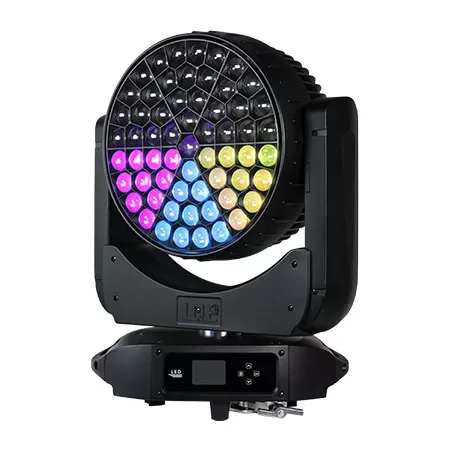
1000w 61x40w RGBW Stage Moving Head Wash Light LW1000
1000W 61x40W LED RGBW Mulichips Moving Head Wash Lights with Zoom (5°–50°), Covering Large Range and Long Distance. Designed to deliver a 5°–50° ultra-large zoom range to achieve a greater wash effect, illuminating stages and events with stunning lighting effects.
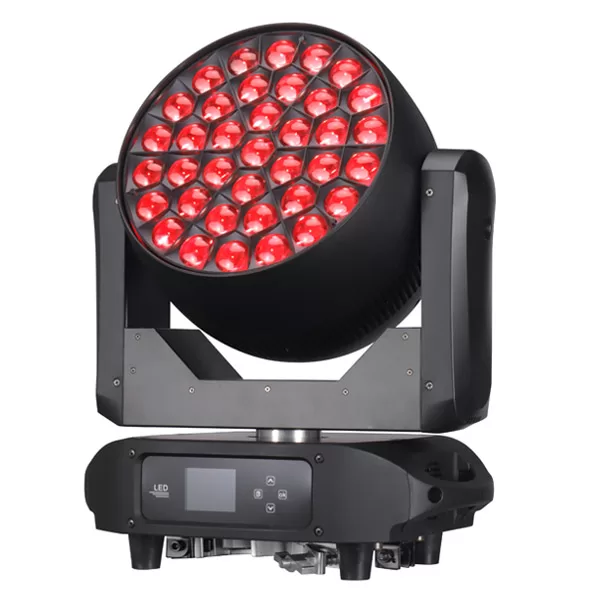
800w 37x40w RGBW Stage Moving Head Wash Light LW800
800W 37x40W LED RGBW Mulichips Moving Head Wash Lights with Zoom (5°-50°), Covering Large Range and Long Distance. Designed to deliver a 5°–50° ultra-large zoom range to achieve a greater wash effect, illuminating stages and events with stunning ring control lighting effects.

LED Moving Head Stage Wash Light LW200Z
The versatile moving head stage light provides a powerful lighting solution for theaters, concerts, and large outdoor performances. Suitable for theaters, TV stations, entertainment stages, and large outdoor performance scenes.

600w 19x40w RGBW Stage Moving Head Wash Light LW600 Zoom IP20
600W 19x40W LED RGBW Mulichips Moving Head Wash Lights with Zoom (5°–50°), Covering Large Range and Long Distance. IP20: Designed to deliver a 5°–50° ultra-large zoom range to achieve a greater wash effect, illuminating stages and events with stunning ring control lighting effects.

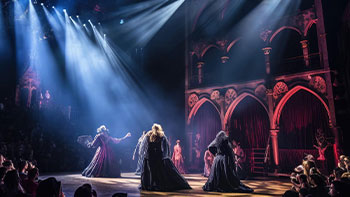
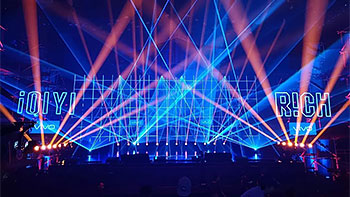

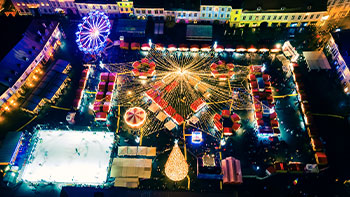








Linkedin
YouTube
Whatsapp: +8618924548390
TikTok